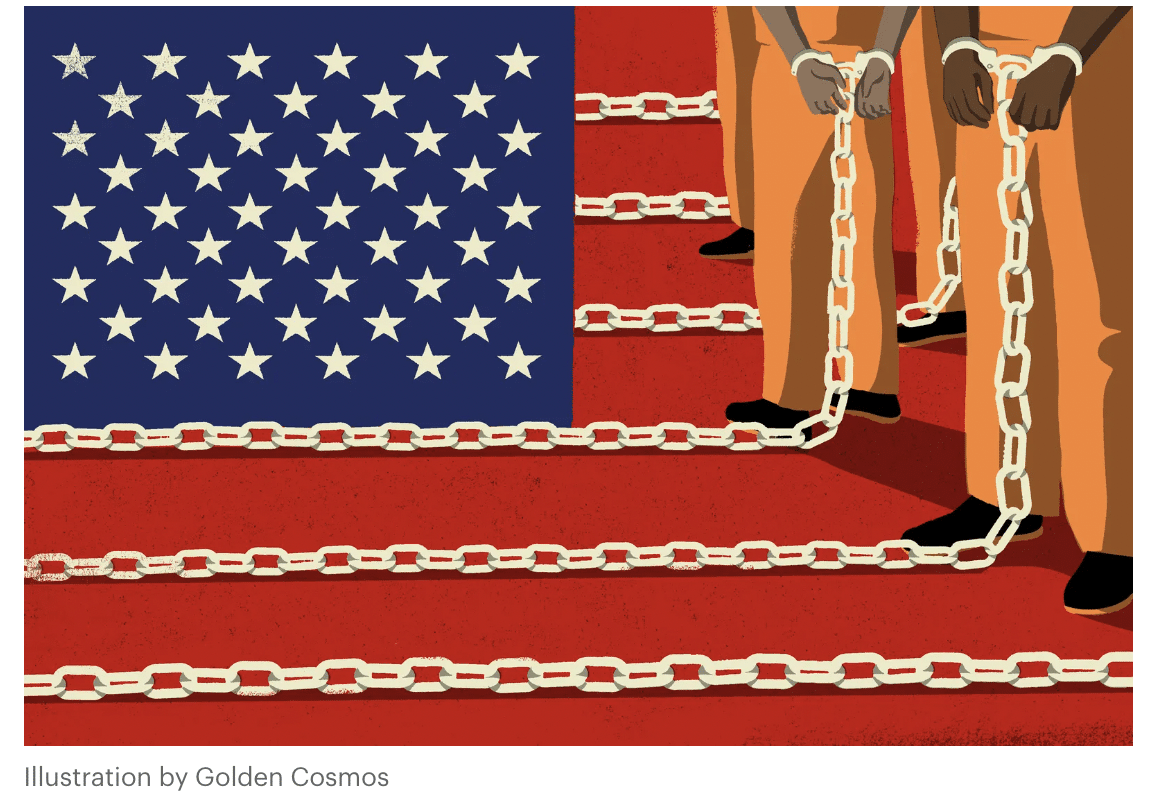The challenges of navigating jail or prison can be overwhelming in any language, especially if denied access in one’s native language. Incarcerated deaf people experience this on a daily basis, missing the connection with family members, inmates and recreational opportunities or programs. Beginning January 1, 2024, the Federal Communications Commission (FCC) must provide access to telecommunications relay services (TRS) and point-to-point video service for incarcerated people who are deaf, hard of hearing, deafblind, or who have a speech disability.
Erin Sanders-Sigmon, an interpreter and member of the nonprofit organization HEARD (Helping Educate to Advance the Rights of the Deaf) summarizes the FCC ruling in ASL. Erin, along with the Marshall Project, a nonpartisan, nonprofit news organization bringing awareness to the U.S. criminal justice system, is dedicated to supporting all incarcerated deaf and disabled persons.
Erin also shares the story of Alphonso Taylor of Maryland state prison. He was the only deaf man in his unit, causing isolation and lack of basic human interaction. Click the video below or visit the website to watch the video in full: https://www.themarshallproject.org/2023/03/21/deaf-prison-fcc-video-calls.
Back in 2010, Virginia was the first state to install videophones as part of a settlement with deaf and hard of hearing inmates. Finding an accurate database of the specific number of videophones installed in any kind of facility has proven to be a challenge. Several states, including Idaho, Florida, Maryland and Louisiana, to name a few, have installed videophones, primarily due to lawsuits.
Which facilities provide what service? It depends on two factors: the size of the incarcerated population in all the correctional facilities run by either the city, county, state or federal law enforcement agency AND if broadband internet access is available at the facility.
If broadband internet is available and the total of correctional facilities run by law enforcement agency have an ‘average daily population’ of 50 or more incarcerated people, then the Incarcerated People’s Communication Services (IPCS) provider in such a facility must provide the following:
- Internet Protocol Captioned Telephone Service (IP CTS)
- Internet Protocol Relay Service (IP Relay)
- Video Relay Service (VRS)
- Point-to-point video service that allows direct communication between people who use ASL
- Teletypewriter (TTY) – based relay service
- Speech-to-Speech Relay Service (STS)
If no broadband internet is available and the total of correctional facilities run by law enforcement agency have an ‘average daily population’ of 50 or more incarcerated people, then the IPCS provider in such a facility must provide the following:
- Non-Internet Protocol Captioned Telephone Service (CTS)
- TTY-based relay service
- STS
If less than 50 incarcerated persons, the IPCS provider is such a facility must provide the following:
- TTY-based relay service
- STS
Another aspect of accessibility is hearing aids and cochlear implants. Anthropologist Michele Friedner investigates the U.S. prison policies that continue to deny deaf incarcerated people adequate access to hearing aids. Read about her research here: https://www.sapiens.org/culture/deaf-incarcerated/.
With the new FCC rule being implemented in 2024, it certainly is a step forward but it does not seem to be a step far enough. The facilities with less than 50 incarcerated persons are not providing equivalent communication access for those that are deaf and hard of hearing. Accessibility has taken on an even deeper meaning as our world transitions to a culture fueled by technology. Every person deserves the right to access all the information in their preferred language, be it signed, written or spoken. Accessibility is a right that should be provided without question.
Works Cited:
“‘Prison Within a Prison’: New Mandate Offers Lifeline for Deaf People.” https://www.themarshallproject.org/2023/03/21/deaf-prison-fcc-video-calls
Incarcerated People’s Communications Services. https://www.fcc.gov/research-reports/guides/frequently-asked-questions-faq-communications-services-incarcerated-people


